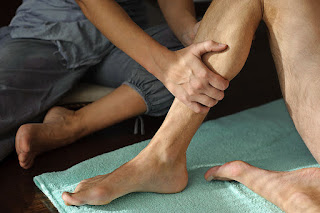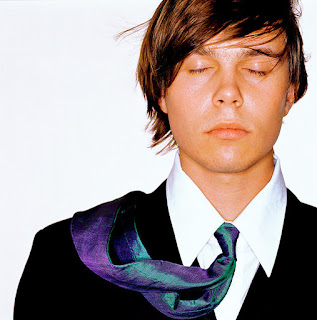EXERCISE FOR SCIATICA WITH LOWER BACK PAIN: WHAT’S THERE TO KNOW
Sciatica, Lower Back Pain and Depression
Sciatica and lower back pains are also a major reason for opioids and other pain-killer addictions. This is because for a long time these drugs have been prescribed as the prime line of sciatica and lower back pain treatment. Depression is the other condition associated with sciatica and lower back pains. Patients with sciatica, lower back chronic pain, and depression are even at a greater risk of addiction.
This is why it’s important for you to rule out symptoms of depression before going for opioids and other pain-killer prescriptions out there. Identifying the real cause of pain for which you suffer can also help in getting the right sciatica and lower back pain treatment. Most often we associate the same to events of a previous day while the real triggers could have occurred a week or so before.
Common Symptoms and Types of Sciatica
According to Medical News Today (MNT), sciatica is the name given to pain caused by irritation of the sciatic nerve. Sciatic nerve on the other hand is described as the longest and widest nerve in the human body, which runs from the lower back through the buttocks and down to the legs ending just below the knee. It controls other nerves in the lower legs and provides sensation to the foot.
Sciatica is usually caused by a compressed nerve root in the lower back area. It is often confused with general back pain however symptoms associated with it may be felt in several other parts of the body. Like is the case with lower back pains, sciatica is categorized as either acute or chronic. Symptoms include numbness in parts of the leg along the nerve and tingling sensation in the feet.
Common Causes and Triggers of Sciatica
There’s no single cause of sciatica. Common causes include lumbar herniated discs, degenerative disc disease, lumbar spinal stenosis, sacroiliac joint dysfunction, piriformis syndrome, and isthmic spondylolisthesis among others. Common risk factors include age, posture,and activities (sports). Others often overlooked include;sex, fatigue, pregnancy, distractions, and consumption of alcohol.
We will not delve into such details of definition, symptoms, causes, and triggers of back pains as we have sciatica. They are rather common knowledge to most of us. What’s important is that they are both conditions of pain that can be quite agonizing when left unattended to. With that said, let us talk sciatica and lower back pain treatment with a focus on exercise for sciatica with lower back pain.
Exercise for Sciatica with Lower Back Pain
While it helps to identify the real cause of sciatica and lower back pain to avoid occurrence and or recurrence, it’s not enough to successfully overcome and live free of the conditions. In most cases symptoms fade away in a matter of weeks. It’s advisable to try to relax both your body and mind when pain suddenly strikes. Applying ice can help. Acupuncture and chiropractic care also can help.
As for opioids and other prescription drugs mentioned earlier, it’s better to try anti-inflammatory herbs such as ginger, curcumin and boswellia instead. However, as professionals and practitioners have come to learn, exercise for sciatica with lower back pain incorporating a mix of strengthening, and aerobic routines are the best prescription for sciatica and lower back pain treatment and prevention.
a) Strength Exercise Routines
Most of these exercise for sciatic with lower back pain routines focus not only on the lower back but also the abdominal(stomach), gluteus (buttock), and hip muscles. They include leg curl, glute-harm raise, deadlifts, and core strength exercises such as segmental rotations, side planking, and abdominal presses. They provide pain relief since they support the spine keeping it in alignment.
b) Stretch Exercise Routines
Stretching is the other routine of exercising recommended for sciatica. They are designed to help relax muscles that would otherwise cause pain when left tight and inflexible. Examples include; hamstring stretches,passive extensions, pelvic tilts, and gentle rotations, low back stretches, and leg extensions. The other stretch exercise for sciatic with lower back pain is the Bird-Dog-Move.
c) Aerobic Exercise Routines
Other than strength and stretch exercise routines, Low impact aerobics such as walking, cycling, and swimming are also recommended for sciatic and lower back pain treatment. Often they help in keeping the spinal cord healthy by allowing fluid exchange between the lumbar vertebrae discs, which is how they also exchange nutrients. Aerobic activities also stimulate release of endorphins.
Also, these exercise routines may be performed either separately or in combination. You do not need to feel sciatic and lower back pains to begin. The same can be done to prevent occurrence of such pains especially if what you do on a daily basis involves sports and lots of sitting down. Other exercises routines that can help include Yoga, Tai-Chi and Pilates. Water/Pool therapy is another.
How to Deal With Neuropathic Related Pains
Since anxiety and depression are hindrances to effective healing, you also need incorporate stress management into your treatment program. This way you can avoid neuropathic pains occurring as sciatic and lower back pains.Consult your personal physician before signing up for any exercise for sciatica with lower back pain.Also remember to stop in the event that the pain fails to subside.
Finally, remember to keep it at Iache for more informative pieces on pain, addiction, and wellness.



Comments
Post a Comment